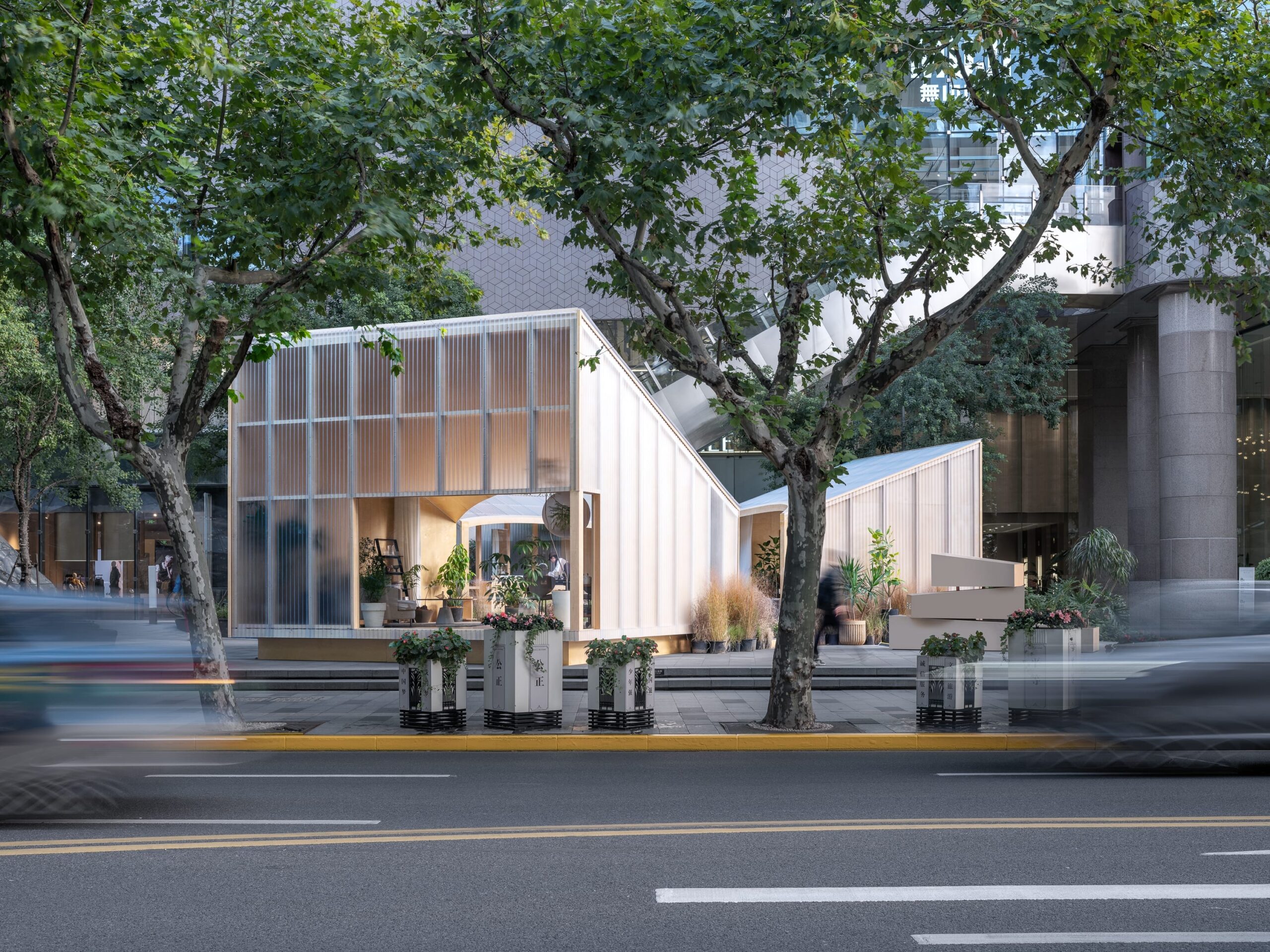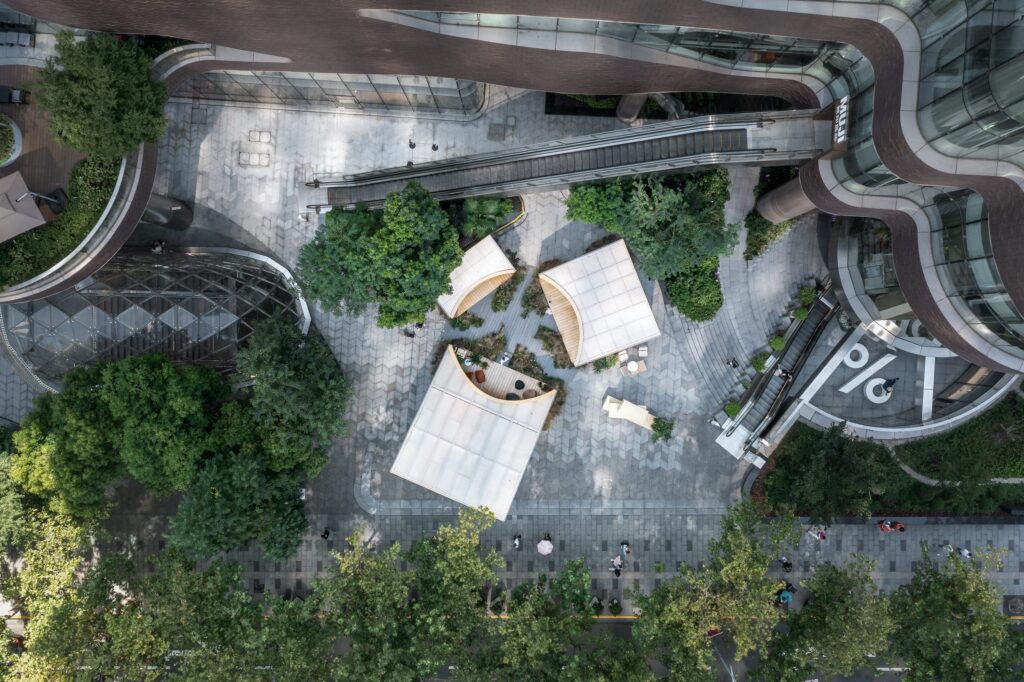
People and cars are in a hurry on the busy Middle Huaihai Road. The site of the project is located on the south side of the tallest building in the Xintiandi shopping area. In contrast to previous projects of actual architecture, this time it is about the design of a spatial installation – PARKLIFE. “Home” and “micro park” are two important themes to be followed in the creation.

This spring, the epidemic and lockdown in Shanghai have brought the public’s daily focus back to the space of “home”. We have found that while the actions of people leaving their homes have greatly decreased, the animals and plants of the city have always survived better. This installation is part of Design Shanghai·Xintiandi Design Festival 2022, the relationship between human, home and nature is deconstructed and reconstructed,we hope to create a space where people can pause and rest in the hustle and bustle of the city, and encourage the viewer to rethink the “home”, while the time spent at home has increased dramatically due to the epidemic.
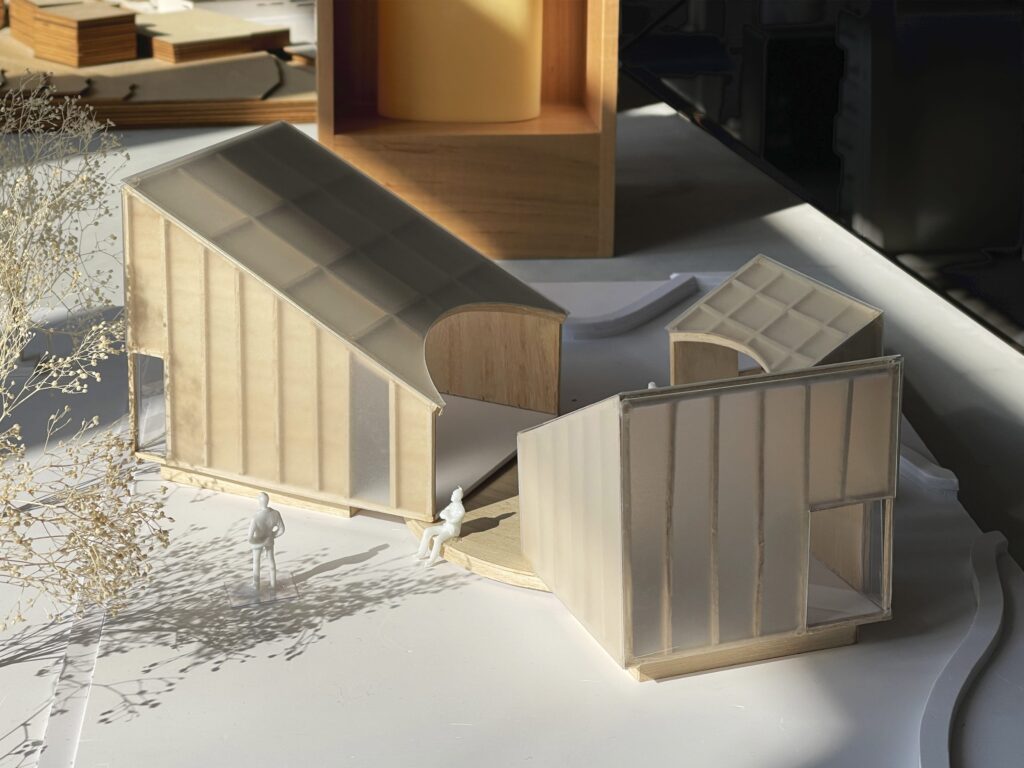
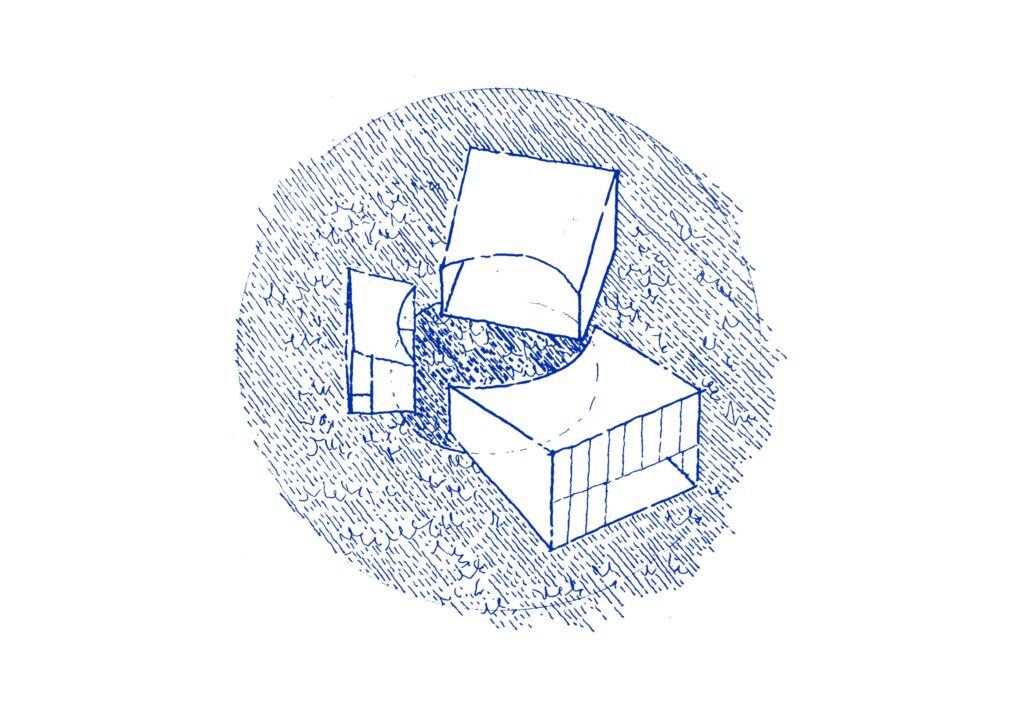
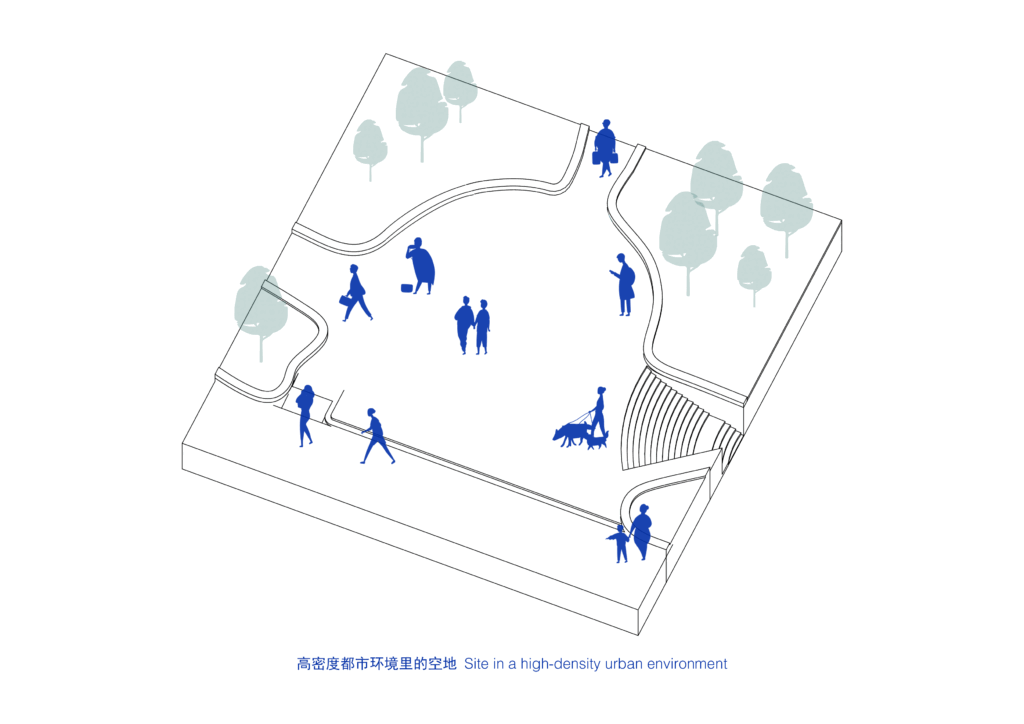
Encircling house
Since there were already several intersecting pedestrian walkways in the site, the architects used the existing moving lines as a means to cut through the space and divide the three relatively closed original volumes. We reconstructed the three basic rooms of the deconstructed “house”: Living room, bedroom and bathroom, and created small, medium and large size differences according to the different functions. Following the rotation angle of the surroundings, the visual permeability of the street facade is balanced by the dynamic lines. On the other hand, our design takes into account the different physical and privacy needs of people for the living room, bedroom and bathroom, and develops the appropriate height option for each room. Within the height limit, the highest point of the floor height is 5 meters and the lowest is 2.45 meters. The three sloping roofs not only form the centripetal character of the “house”, but also fulfill the function of channeling rainwater into the landscaped courtyard. There is no hard barrier between the separate parts of the “house” and the three main entrances. Crowds go in or around it, leaving tangled footprints inside and outside the installation.
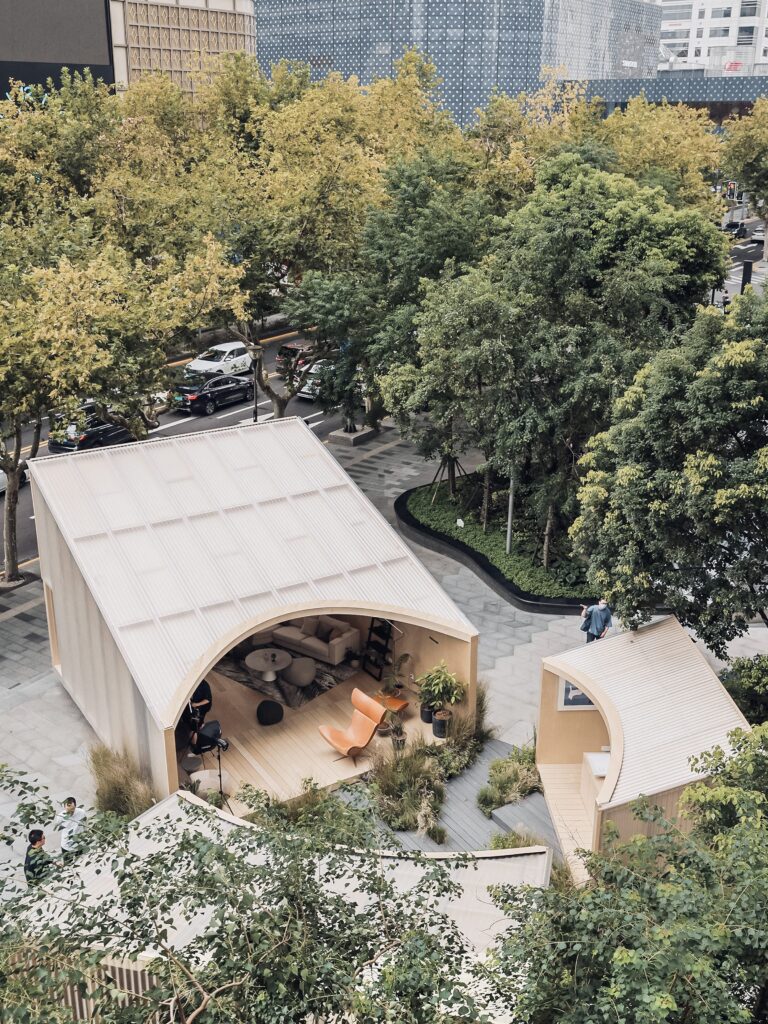
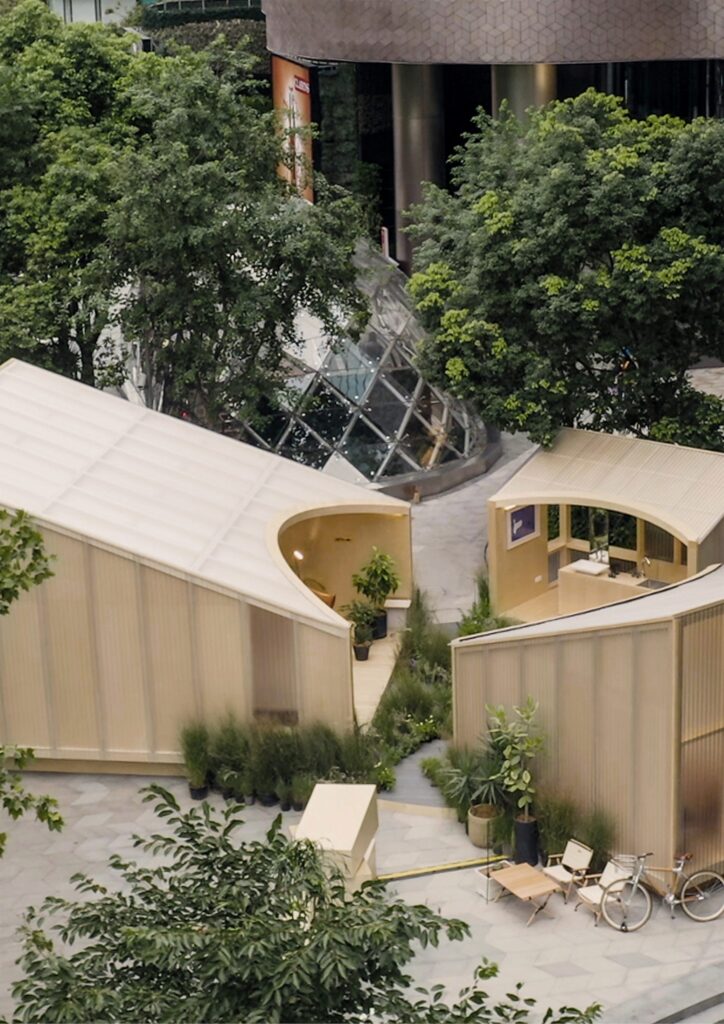
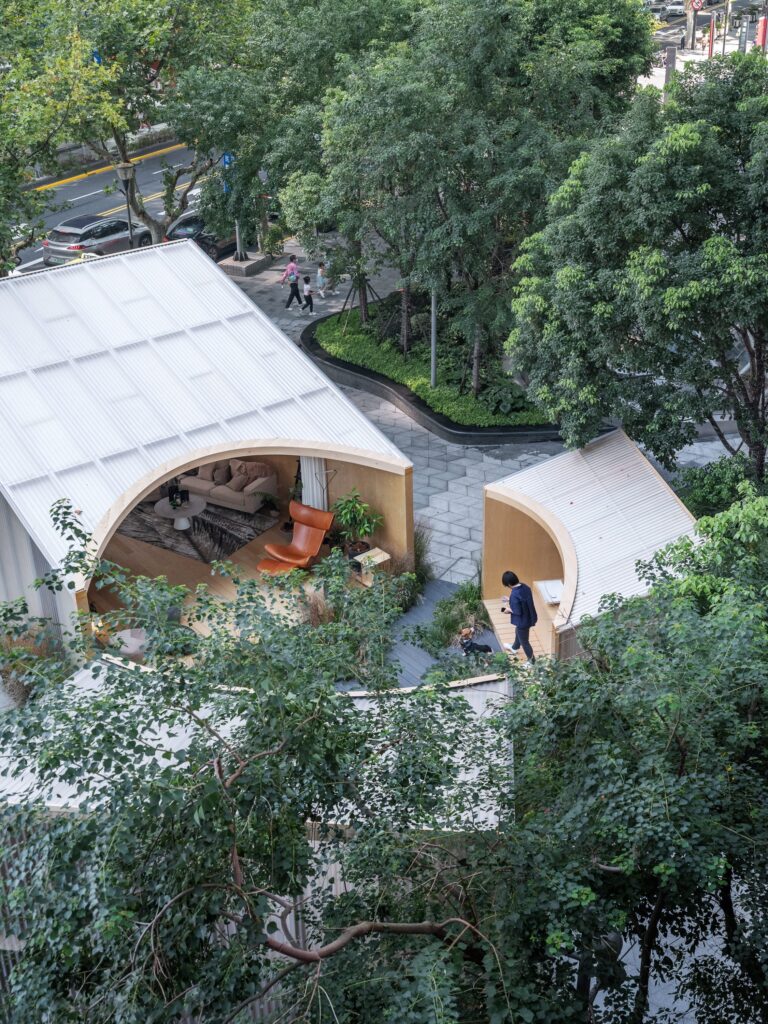
Plywood and the frosted corrugated panels give the installation facade a contrast and a fusion of inside and outside, real and virtual, between the two planes. By reversing the structural design to expose the keel, the interior facade is tidied up, while the vertical keel reflects the vertical growth pattern of the trees around the base. In addition, the three rooms have additional window openings at certain points on the facade to enhance the feeling of permeability and bring more natural light inside. Several coherent visual bands are formed between each group of window openings. The atmosphere of “home” is released and overlaps with plants and urban scenes that arouse curiosity and imagination of passing “spectators”.

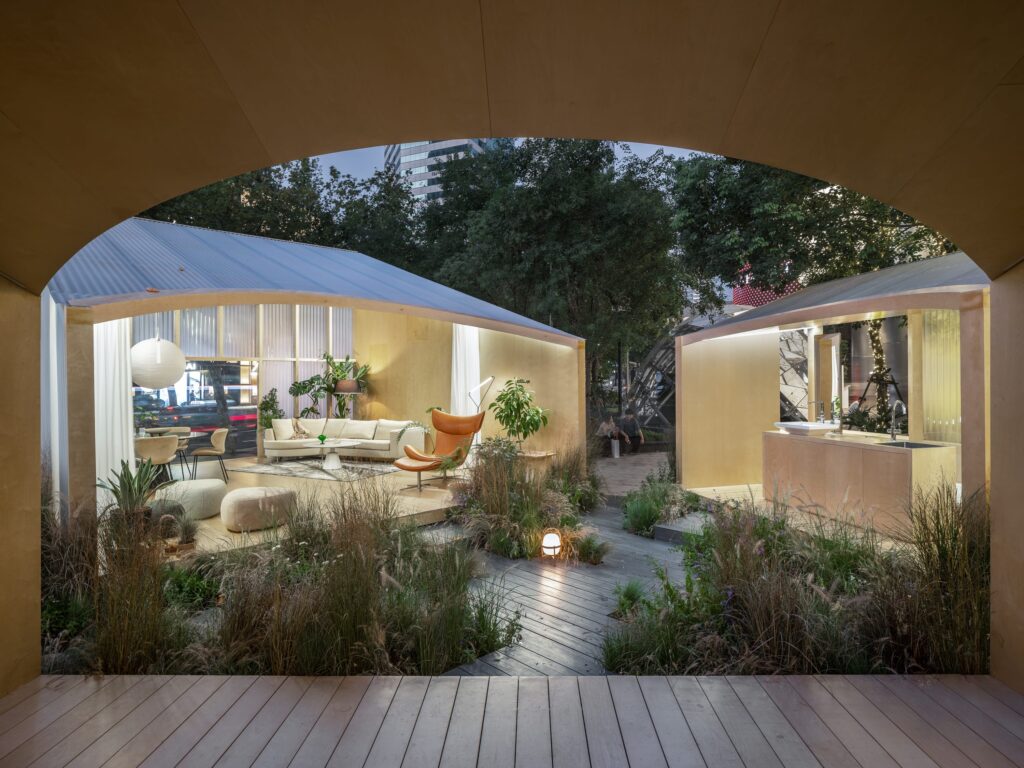
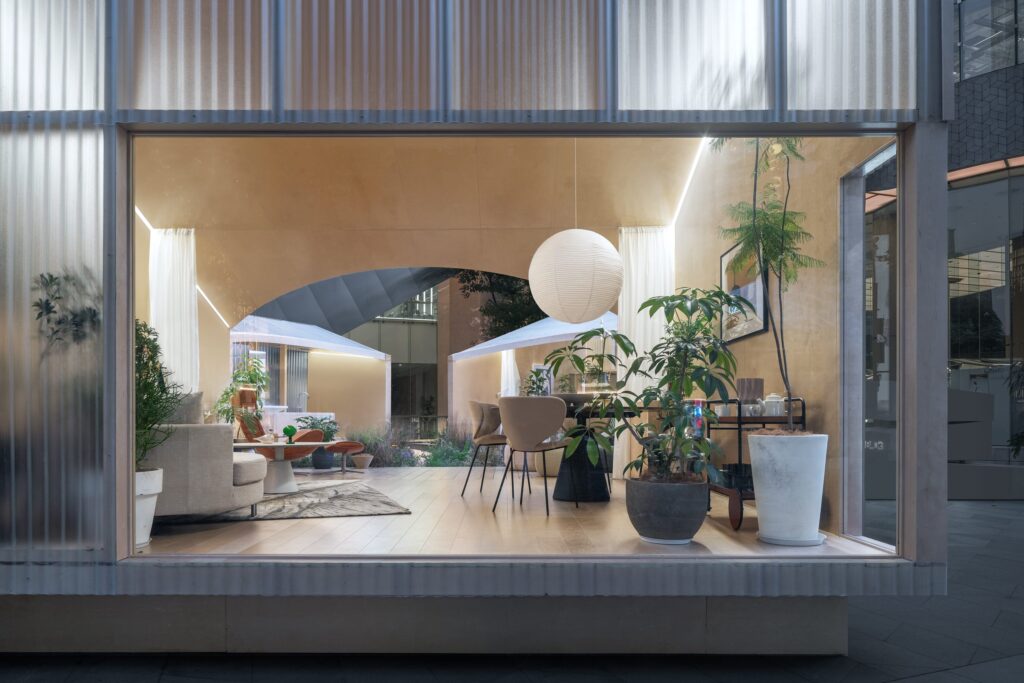
Engawa space
If you stop at the entrance, you can see how the different parts of the “house” are naturally “squeezed” into a public area in the middle——a micro-park overgrown with plants, where the related activities take place. Due to the temporary nature of the installation and the need for low-tech construction, the main plant used is manzanita, which is less dependent on water and fertilizer. Based on the analysis of the moving lines, corrosion resistant wood forms staggered path to guide people and provide a natural garden for visitors or group activities.
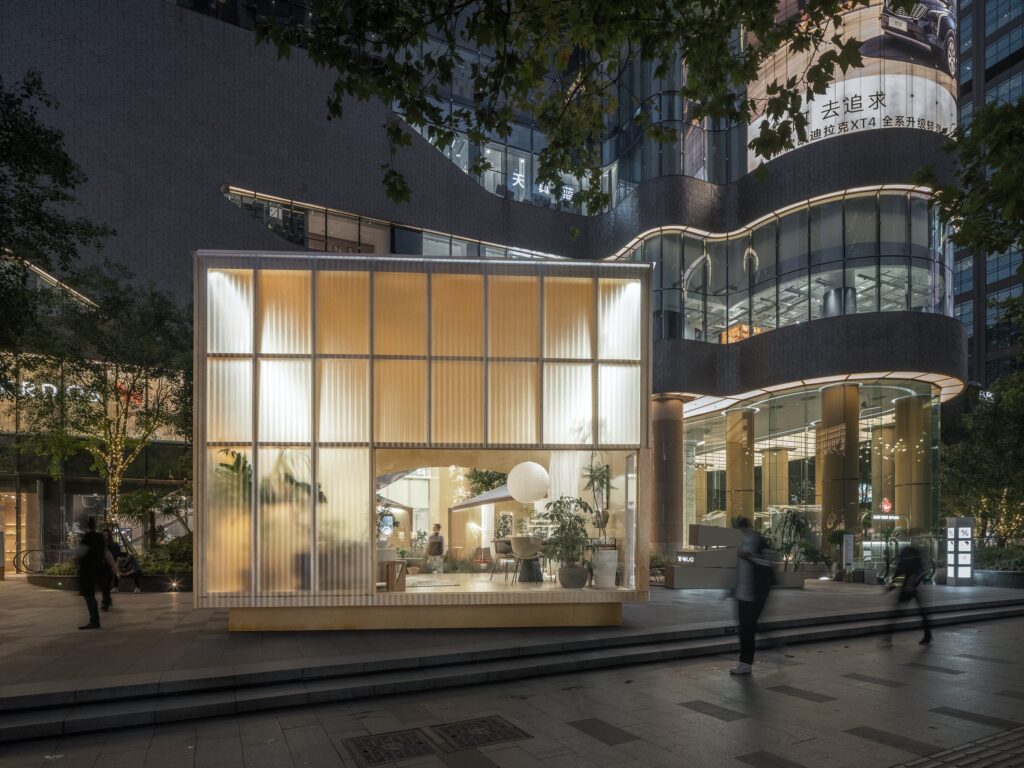
On the other hand, the question of how to establish a relationship between the private and the public space is quite attractive and worth considering. The “Engawa” of traditional Japanese houses inspired us. Architect KISHO KUROKAWA once said, “Engawa serves as an intermediate space between indoor and outdoor and is the third domain between inside and outside. It is neither divided between inside and outside, nor independent of them, but a medium that unites the realm of inside and outside.”Our design begins by raising each room 0.45 meters and cutting three arches through a circle with a radius of 3.5 meters to create a covered but relatively open colonnaded space. Nature and the house interpenetrate under the colonnade and are in balance with each other.

The shape of PARKLIFE is surrounding but not closing, which helps to reduce the noise of the outside world. When you sit down in Engawa space, the wind chimes ring in your ears, and the flowers and plants of the garden are simply at people’s feet. Viewed from above, the various parts of the “house” are closely connected to the micro-park through the colonnade, as if “embracing” each other and giving comfort to the people.

Flowing room
As people move from “home” to “home”, nature flows thanks to the blurred boundary of the installation between inside and outside. A variety of small shrubs and trees thrive in a controlled manner under the eaves, providing a sense of “pro-life” enjoyment. The interior reduces the decorative language to a minimum and lets light, plants and furniture elements be the protagonists of the space. When the design erases the fourth wall of the house, the translucency of the installation brings in daylight during the day and blurred shadows of light at nightfall. In this way, the different depths of the living room, bedroom and bathroom can be interpreted and experienced several times. With the help of the calm and warm atmosphere, the “PARKLIFE” can reinforce people’s idea of a home and a way of living, and experience the “infinite” life in a limited space.
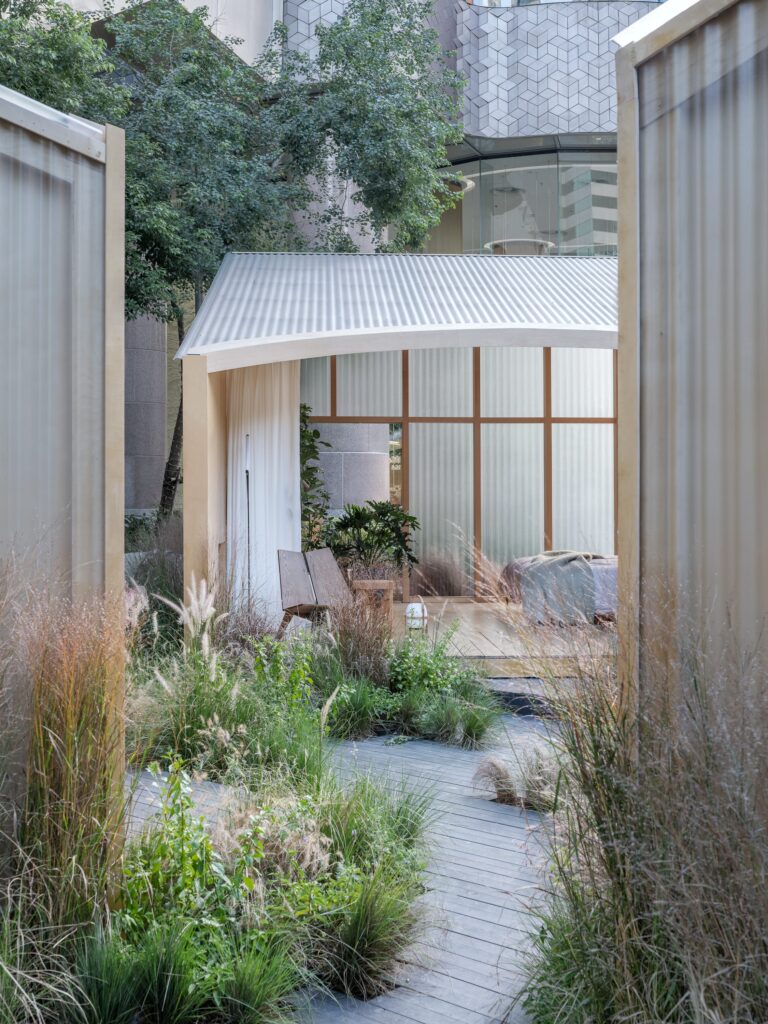
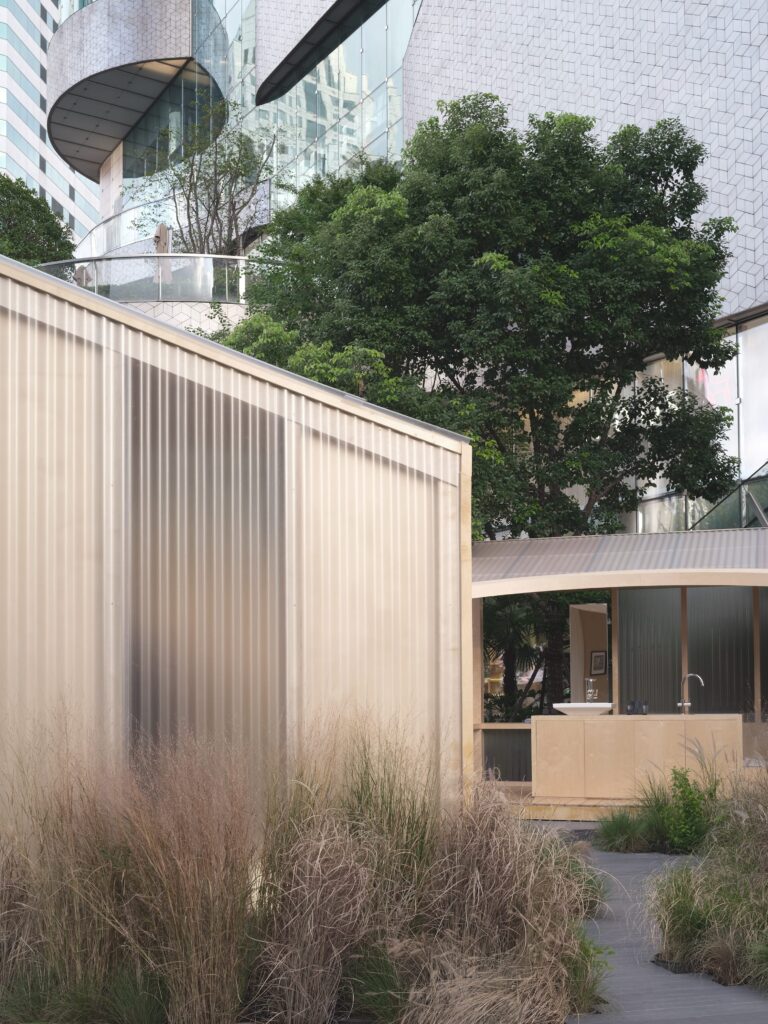

The construction of the installation took only 3 days and was allowed to operate only at night. For this reason, we had many discussions with the contractor and finally used prefabricated components to reduce the difficulties of working on site.At the end of the exhibition, all potted plants of the installation were adopted a second time. Plywood, one of PARKLIFE’s most important building materials, is dismantled, cut and reassembled in a “sustainable” cycle and reappears as new furniture in other living spaces.

Drawings:
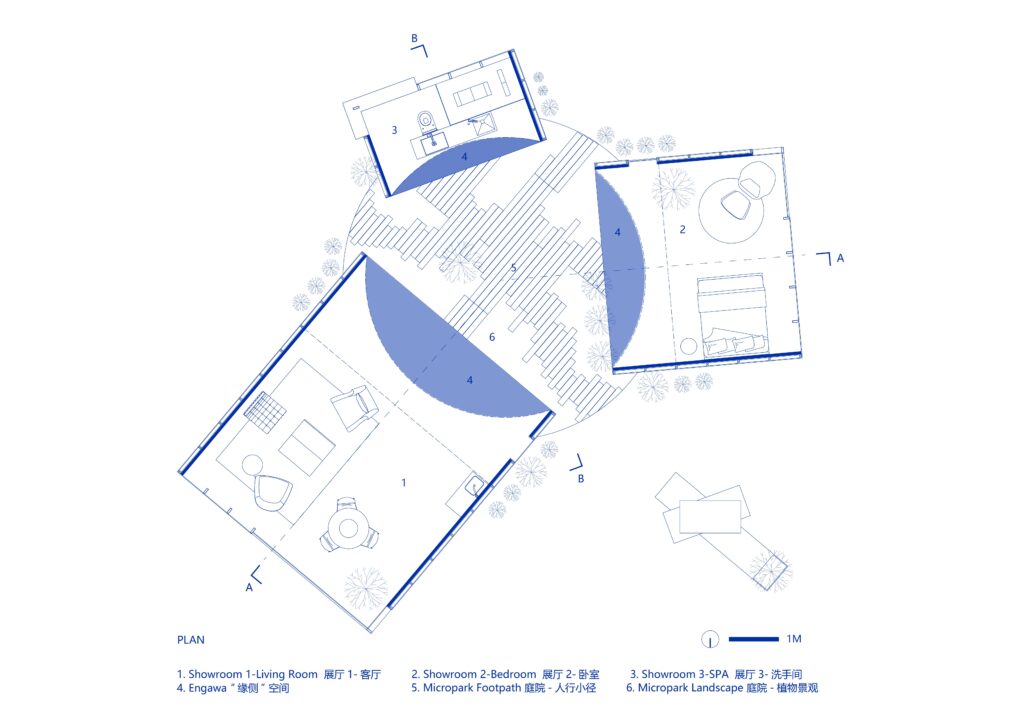
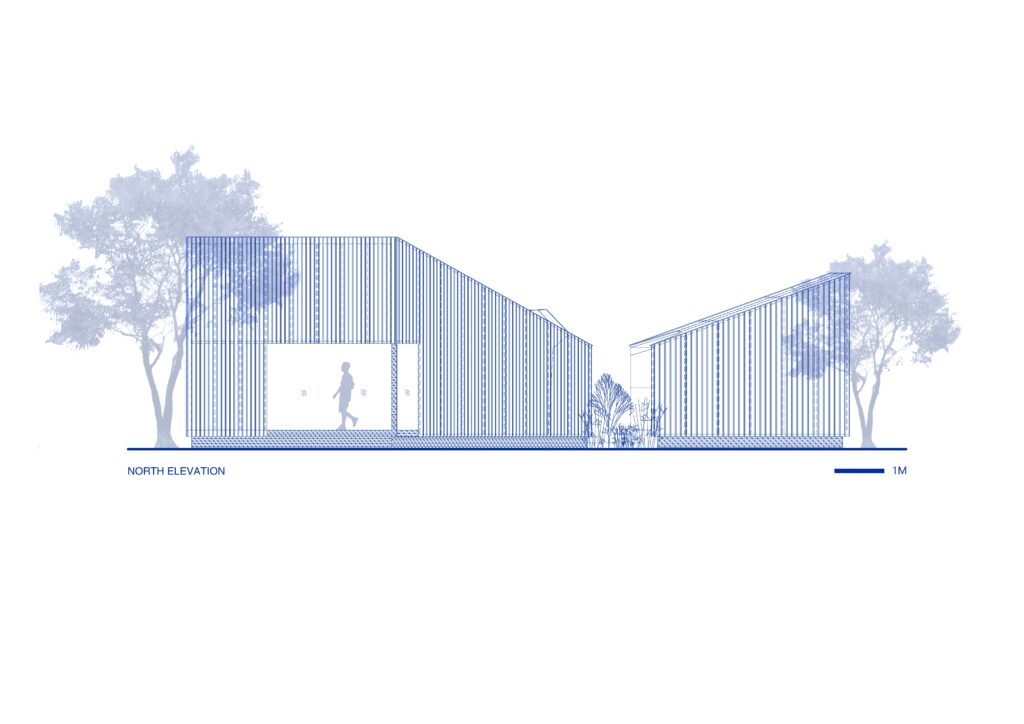
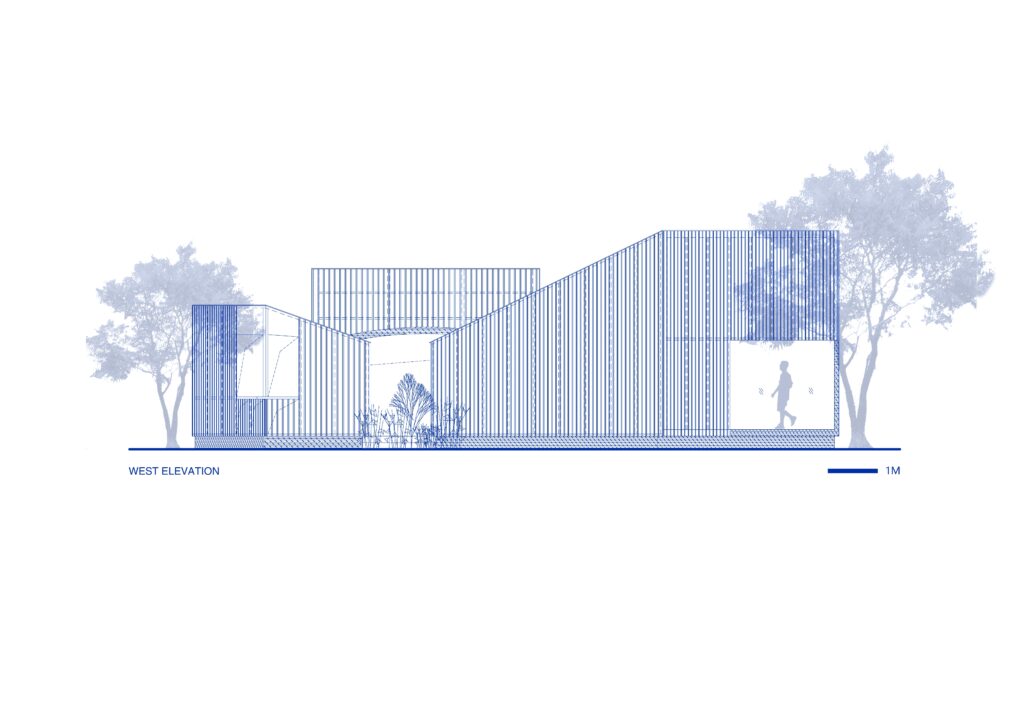


Project facts
Project Name: PARKLIFE | Spatial Installation In The Downtown
Function: Exhibition
Design Period: 2022.03-2022.09
Construction Period: 2022.09
Location: Shanghai
Building Area: 90SQM
Architects: Xiao Lei, Shigeno Yuji, Deng Zhaojing, Yang Yuqiong, Shen Ruijie
Cooperation: Construction – LAND GROUP
Landscape Execution – Intro Landscape
Type: Installation
Status: Completed
Photographs: Studio FF

